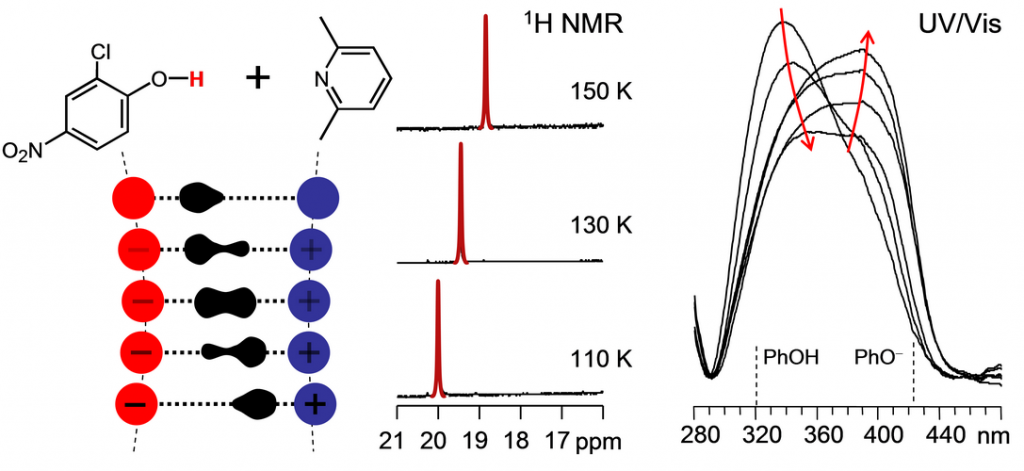B. C. K. Ip, I. G. Shenderovich, P. M. Tolstoy, J. Frydel, G. S. Denisov, G. Buntkowsky and H.-H. Limbach,
«NMR Studies of Solid Pentachlorophenol-4-Methylpyridine Complexes Exhibiting Strong OHN Hydrogen Bonds: Geometric H/D Isotope Effects and Hydrogen Bond Coupling Cause Isotopic Polymorphism»
J. Phys. Chem. A 2012, ASAP.
DOI: 10.1021/jp305863n.

Abstract:
We have studied the hydrogen bond interactions of 15N labeled 4-methylpyridine (4-MP) with pentachlorophenol (PCP) in the solid state and in polar solution using various NMR techniques. Previous spectroscopic, X-ray, and neutron crystallographic studies showed that the triclinic 1:1 complex (4-MPPCP) exhibits the strongest known intermolecular OHN hydrogen bond in the solid state. By contrast, deuteration of the hydrogen bond gives rise to the formation of a monoclinic structure exhibiting a weaker hydrogen bond. By performing NMR experiments at different deuterium fractions and taking advantage of dipolar 1H–15N recoupling under combined fast MAS and 1H decoupling, we provide an explanation of the origin of the isotopic polymorphism of 4-MPPCP and improve previous chemical shift correlations for OHN hydrogen bonds. Because of anharmonic ground state vibrations, an ODN hydrogen bond in the triclinic form exhibits a shorter oxygen–hydron and a longer oxygen–nitrogen distance as compared to surrounding OHN hydrogen bonds, which also implies a reduction of the local dipole moment. The dipole–dipole interaction between adjacent coupled OHN hydrogen bonds which determines the structure of triclinic 4-MPPCP is then reduced by deuteration, and other interactions become dominant, leading to the monoclinic form. Finally, the observation of stronger OHN hydrogen bonds by 1H NMR in polar solution as compared to the solid state is discussed.



